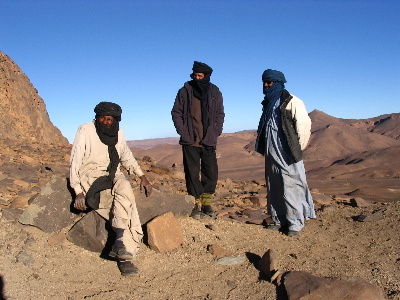Mobile Money has been one of the great success stories that showed how new technology designed for developing countries can energize an economy. And, when well connected, can have positive externalities on government transparency, health, and consumer activity. Thus, having a revolutionizing impact on the lives of the poor and emerging middle classes in developing countries.
This article will not only give a brief background of the emergence, implementation, and externalities of the mobile money transfer system, but also attempt to give a reason as to why the implementation has only shown greater success in Kenya as opposed to other developing, sub-Saharan countries.
Breakthrough: A step in grey
The first trial of the mobile transfer system with the introduction of ‘Sell Phone’ in the Democratic Republic of Congo had failed due to an incomplete business plan and inadequate timing of the implementation. It was a time of severe instability and bad governance in the DRC.
Despite this failure, mobile giant Vodafone saw promise for the core idea of the technology, and contracted the product to development firm ‘Sagentia’. A few months of trial and error later, the entire team of Sagentia was transferred to US machinery conglomerate IBM until the ‘M-Pesa’ (Swahili for Mobile Money) system was finally launched through the largest provider of Kenya’s mobile phone industry ‘Safaricom’ in 2007.
In order to understand the positive effects, it is firstly important to understand the lives of the many Kenyan workers and farmers that are in need of a simple, cheap way to save money, and send it to their families. The reason why M-Pesa, and the services connected to them have been so successful is because their impact has been tested and the lives of the people that were going to use them was carefully analyzed through modern methods of information gathering in developmental economics such as randomized trials. (Read: Rethinking The Economics of Poverty).
This is among the reasons why M-Pesa has become Kenya’s most popular money transfer mechanism in 2009 and in 2013 is a conduit of 25% of Kenya’s GNP. Its impact has become far more complex. Mobile Money in Kenya has developed into a win-win situation for several sectors in Kenya and shows what collaboration and communication between the government, the private sector, civil society, and local NGO’s can amount to. Mobile money transfer through its connection to the service sector, government, and civil society, has helped increase labor productivity through less bureaucracy, more safety, and increased transparency. Micro-finance institutions, insurance companies, and the government are taking advantage of the service for cash disbursement and repayment, insurance grants, procurement, and even salary payments. Just a reminder to the reader: This all happens on a phone!
The East African Community has planned to implement its mHealth project through mobile money allowing as stakeholders look to reduce costs, add value, and enhance the reach of health services. The mHealth market is expected to exceed $30 billion after its implementation. (just to put this into perspective: Uganda, a member country of the EAC, has a GDP (in terms of official exchange rate) of $20 billion in 2012).
Many great other examples of effective services that use mobile money could be named. One just has to consider the positive impact of greater money circulation in rural areas where it has amounted to greater food security and increased business confidence.
However, there are ways to enhance the mobile money market. Still, the M-Pesa infrastructure in rural areas has to be improved to tackle the divide between rural and urban areas that Kenya, like virtually every other developing country, is facing. Also, more competition with the all to powerful market leader Safaricom is necessary to ensure great service and cheap prices in the long-term. The system also has to improve in reaching the very poor entrepreneurs through its micro-financing institutions since they often face credit-market discrimination due to high risk-adversity.
Why Only Kenya?
Of Course, Kenya is not the only country that has implemented mobile money. After having seen it being implemented successfully and turn into a very profitable business, many other companies jumped on the ‘mobile-money-bandwagon’. Unfortunately, as witnessed all too often in developmental economics, a missing care for complexities by local and foreign investors alike and the missing necessary collaboration and communication has kept mobile money from reaching its full potential elsewhere.
The obvious explanations will point to the fact that Kenya, as a country with great recent history of economic growth, has a greater level of financial resources in terms of foreign direct investments in place, and also has the second greatest density of mobile phones in sub-Saharan Africa with 75% users compared to the African average of 65%.
But the root causes lay far deeper, as a World Bank Institute and ICT for government expert explains in a talk on the issue. He attributes much of the issues that mobile money is facing elsewhere in sub-Saharan Africa to the lacking of a series of different services that should go hand in hand with the money-transfer mechanism that is being provided.
For instance, in rural Kenya, insurance companies have partnered up with the mobile money service to calculate a farmer’s potential yield given the current vegetation, thus making him able to insure his crops and use his premium through the mobile money service to save, consume, pay taxes, and send money to his families. It seems as though other sub-Saharan countries’ mobile phone providers are merely installing an initial framework for mobile money, which only involves saving and sending money, just to be ensured that they can expand on this initial framework once the service is going to boom.
Unfortunately, this attitude of waiting on the market rather than determining the market is essentially what is causing a missing breakthrough of mobile money in other sub-Saharan countries as Tanzania and the Democratic Republic of Congo.
If we look back of the successful example of Kenya, it was a collaboration between the private sector, in form of the mobile phone provider M-Pesa, the government, in terms of offering the ability to pay taxes and involving the administration to use the service to improve transparency, and the ministry of health and local NGO’s that act as health providers that made mobile money the empowering economic, social, and political force that it has become in that country.
However given its great technological potential and flexibility and its suitability for the developing world it will not take long for investors to find a way to incorporate all the necessary services leaving the risk adverse firms with a diminished market presence. But far more importantly, helping developing countries through an understanding of their complexities by profitable business.
- George Kibala Bauer
Sources:
1) Lorreta , Michaels . “It’s better than cash: Kenya’s mobile money market assesment .” Accenture , 11 2011. http://www.merchantpro.co/betterthancash.pdf (accessed April 16, 2013).
2) Pyler , Megan . Community Level Economic Effects of M-Pesa: Initial Findings. working paper., University of Maryland , 2010 . .
3) Trading Economics
4) World Bank Development Indicators





